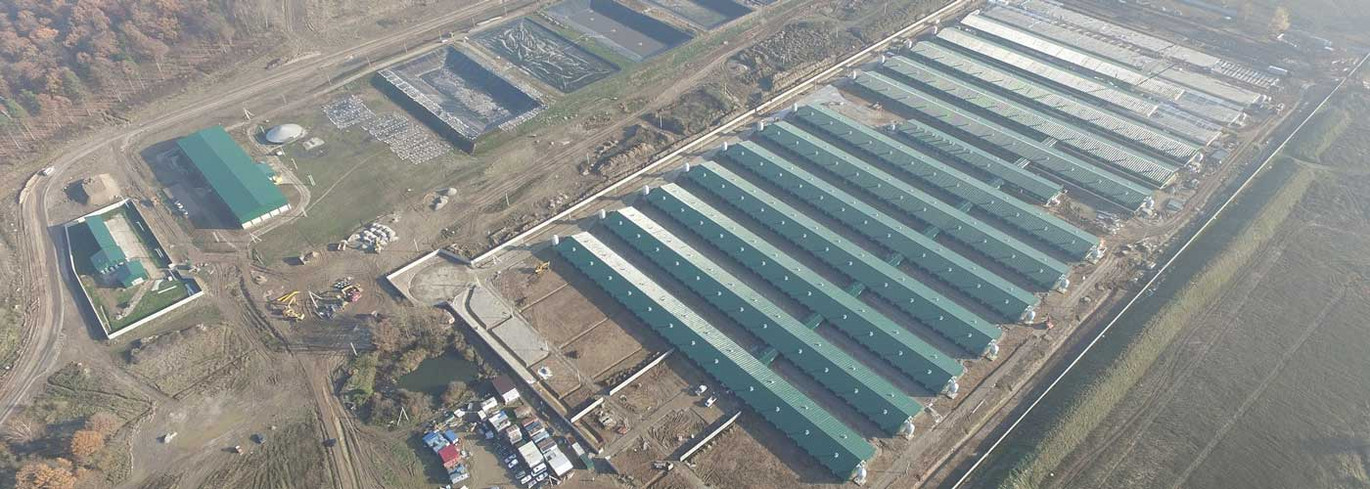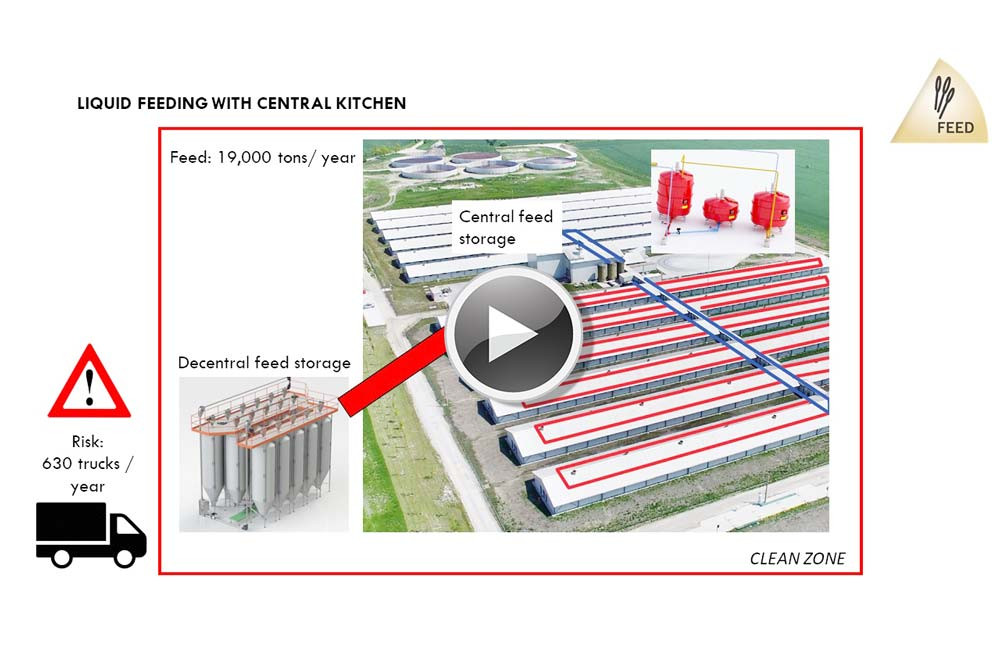
Centralized Feed Storage
Reduce the risk of infections in your pig farm
As a pork producer, you wish to minimize the risk of contaminating their farm, because spreading of infections can lead to significant economic consequences.
Nonetheless, many farmers choose to place the silos very close to the farm. Thereby trucks can drive in and out of the clean zone and so can the workers. Then it is not a clean zone any longer. Harmful bacteria can enter the clean zone and you risk spreading infections.
With this in mind, a centralized feed storage in a building inside the clean zone, in one location only, is an effective way to minimize the risk of contamination.
How does a centralized feed storage help to prevent infections?
1. Control feed unloading.
First of all, a centralized feed storage means that you can control the unloading of feed. The feed is delivered into an isolated building, where the workers can inspect and manage the feed storage from inside the building without putting the clean zone at risk. By that, you prevent the bacteria from entering the clean zone and reduce the risk of contaminating.
2. Always fresh feed.
Secondly, when you centralize the storage the feed will always be fresh. A central storage means that more buildings are sourcing from the same silo and the rotation of feed is increased.
3. Keep constant temperature inside the silo.
Thirdly, when the silo is placed inside an isolated building, it is easier to keep the temperature in the silo steady during the day, which reduce moisture inside the silo and the risk of contamination.
Both centralized storage, high rotation and temperature regulation help reducing the risk of infections.
